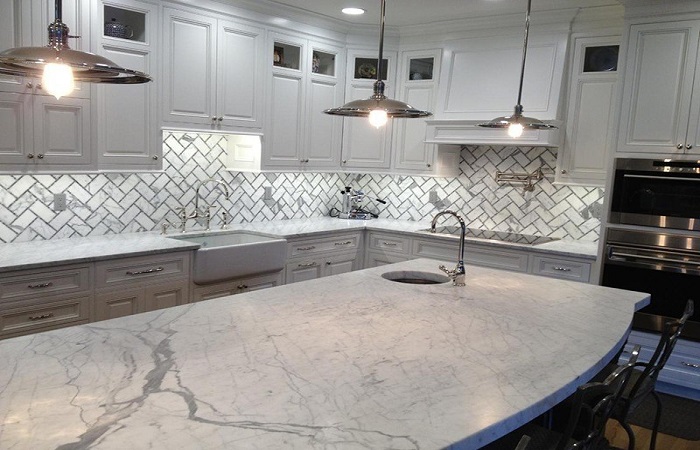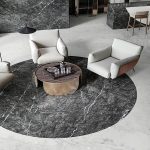Working in Porcelain Takes Patience

Working in Porcelain Takes Patience
Working in porcelain takes patience. The man most often credited as the original creator of European porcelain was a German by the name of Johann Friedrich Böttger. He was an alchemist. He said that he knew how to turn lead into gold.
Porcelain White Gold
Porcelain was white gold, valued for both its durability and its delicacy, and also prized for its exotic origins. Marco Polo first brought it to Europe, from China, in the fourteenth century: a small gray-green jar amid his bounty of silk brocades, spices, and vials of musky scents. Polo called it porcellana.
Porcellana
Porcellana is a nickname in Italian for the cowry shell, whose shiny, white surface porcelain resembles. Their shape resembles the bellies of porcellini or little pigs. Both words are sister to porcellina, a slightly different and slightly dirty word, and what a certain kind of man might call out at a woman as she walks down the street. But then porcelain has always been part of a slightly dirty trade, one filled with piracy and pilfering.
Sixteenth Century
It was only after the sixteenth century, when the Portuguese and the Dutch established their commercial trade routes to the Far East, that there emerged a robust market of export ware: porcelain exclusively made in China for Europe. Today, one can still marvel at the strange game of decorative, Orientalist telephone that this development created.
Domestic Manufacturing
Domestic manufacturing would have been cheaper, easier, and involved less breakage, fewer mistakes. But Europeans couldn’t figure out how to make porcelain at home. Marco Polo took a lazy guess, and for nearly five hundred years no one else had any better ideas. “The dishes are made of a crumbly earth or clay which is dug as though from a mine and stacked in huge mounds and then left for thirty or forty years exposed to wind, rain, and sun,” Polo wrote. “By this time the earth is so refined that dishes made of it are of an azure tint with a very brilliant sheen.”

Porcelain is Likewise Made of a Certain Juice
An account from 1550 suggested that “porcelain is likewise made of a certain juice which coalesces underground and is brought from the East.” In 1557, someone offered the more imaginative hypothesis that “eggshells and the shells of umbilical fish are pounded into dust which is then mingled with water and shaped into vases. These are then hidden underground. A hundred years later they are dug up, being considered finished, are put up for sale.”
Two Essential Ingredients
None of this is completely accurate. Eggshells and fish shells would turn to ash. Porcelain is traditionally made from two essential ingredients: kaolin, also called china clay, a silicate mineral that gives porcelain its plasticity, its structure; and petunse, or pottery stone, which lends the ceramic its translucency and hardness. Kaolin is the more essential ingredient—a potter’s clay is meant to exist, like his glazes, in variations—and it takes its name from a mountain in Jingdezhen, China, where porcelain was first created, more than a thousand years ago, called Gaoling, which means “high ridge.”
Real Story of How Porcelain Invention
Story of how porcelain was invented—and then reinvented and reinvented again—is offered up in Edmund de Waal’s new book “The White Road: Journey into an Obsession,” a breathless pilgrimage to, and history of, three very famous white hills. The first is in Jingdezhen, still the porcelain capital of the world, where white vases will sit unpainted on planks of wood, the way they must have ages ago when orders were fulfilled for emperors.
The second is in Meissen, Germany, where Böttger claimed his success and the first porcelain factory in Europe was established. And the third is in Plymouth, England, where a thoughtful Quaker named William Cookworthy broke down the production ratio, and where the fine-china company Wedgwood was established.
Working in Porcelain Takes Patience
Working in porcelain takes patience as well as skill. The smallest amount of water can change its texture. If a bowl’s walls are inconsistent in thickness, the bowl can crack as it cools, because the ceramic must be vitrified at extremely high temperatures (somewhere between twenty-two hundred and twenty-six hundred degrees Fahrenheit; other clays can be fired a good couple of hundred degrees lower).
Porcelain Evenness
“You can get away with unevenness with other kinds of clay, but it is chancy with porcelain. Your errors, your slapdash decisions, are revealed,” de Waal writes. But this risk of failure is worth the outcome of success: if made correctly, there is nothing thinner, no other clay that possesses that luminosity, that unbelievable strength. Tap a finished bowl with your spoon, and it rings hollow, like a metal cup. Glass shatters, earthenware crumbles; porcelain is otherworldly in its beauty and strength.
High Value of Porcelain
A Meissen porcelain teapot once owned by the mother of King George I, valued at more than three hundred and twenty thousand dollars. It was only after the sixteenth century, when the Portuguese and the Dutch established their commercial trade routes to the Far East, that there emerged a robust market of export ware: porcelain exclusively made in China for Europe. Today, one can still marvel at the strange game of decorative, Orientalist telephone that this development created.
To learn more about us, click here.
Send your price quotes directly to our WhatsApp through this Link: https://wa.link/ord5k8
Sources
www.designingbuildings.co.uk/wiki/Use_of_ceramics_in_construction
www.newyorker.com/books/page-turner/the-european-obsession-with-porcelain
- Back To Articles
- armani grey marble, armany grey, building materials, construction materials, Domestic manufacturing, grey Armany, marble, marble factory, natural building material, natural stone, Niayesh, NIAYESH STONE, Pietra Grey Marble, Pietra Grey Marble Tiles, Porcelain, porcelain advantages, porcelain highlights
Article
Natural Stone Applications
- 22 December 2022
Iranian Stones Introduction According to Source and Quarry
- 21 December 2022
Technical Stone Introduction and Quarrying Procedures
- 21 December 2022
Categories
- blog757
- news1
- Specialized articles756













